10 Examples of How Animals See
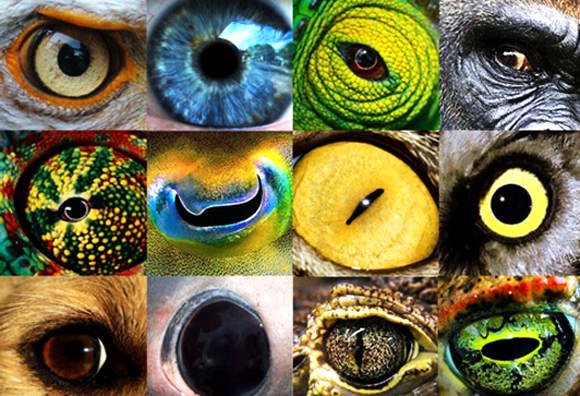
With only our own human perceptions to gauge reality, some of us don't realize that our version of reality is just a combination of measurements defined by the resolution of our senses. We are confined to our own perceptions and the version of reality we see or perceive, through the functions of our various organs, may actually be imperfect and is probably a very dim version of true reality. We cannot actually see through another life form's eyes, at least not yet, but through science we can make a close approximation. We can do this by studying how other animal's eyes are built and how they function, like looking at the number of cones and rods or the shapes of their eyes or pupils and then comparing them with our own. Also, the invention of different types of cameras and handheld flashlights facilitate humans with the ability to observe with different types of light filtration, for example the UV spectrum, which animals like bees see with. Naturally this would be impossible for a human, but science and technology have revealed many wonders and many perspectives to us.
1 What Birds See:
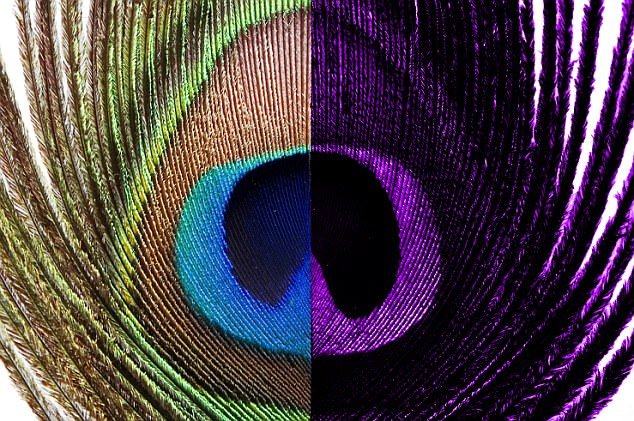
Humans (left) Peacock (right)
Birds have four types of cone cells in their eyes called photoreceptors, while humans only have three. This enables the avian species to visualize the world from a completely different perspective and much more clearly than we do, as most birds can also see the ultraviolet spectrum.
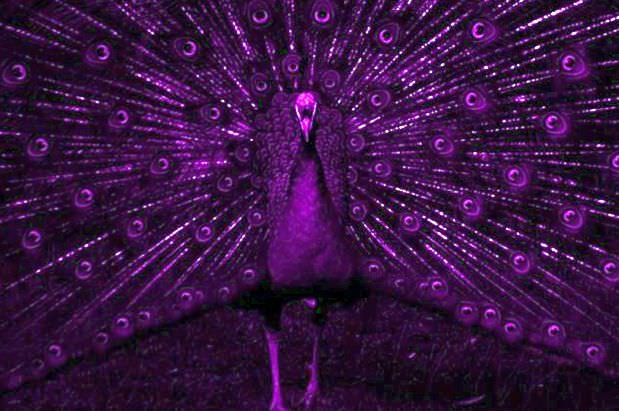
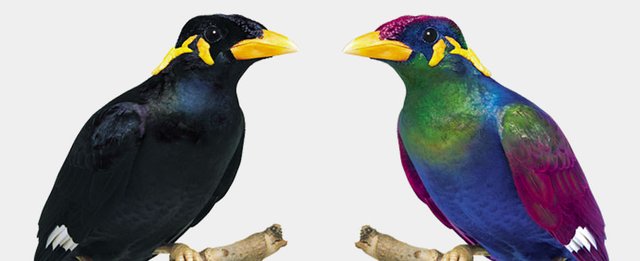
What we see (left) What birds see (right)
Unlike humans, birds are tetrachromats. Their four types of cone cells let them see red, green, blue, and ultraviolet together.

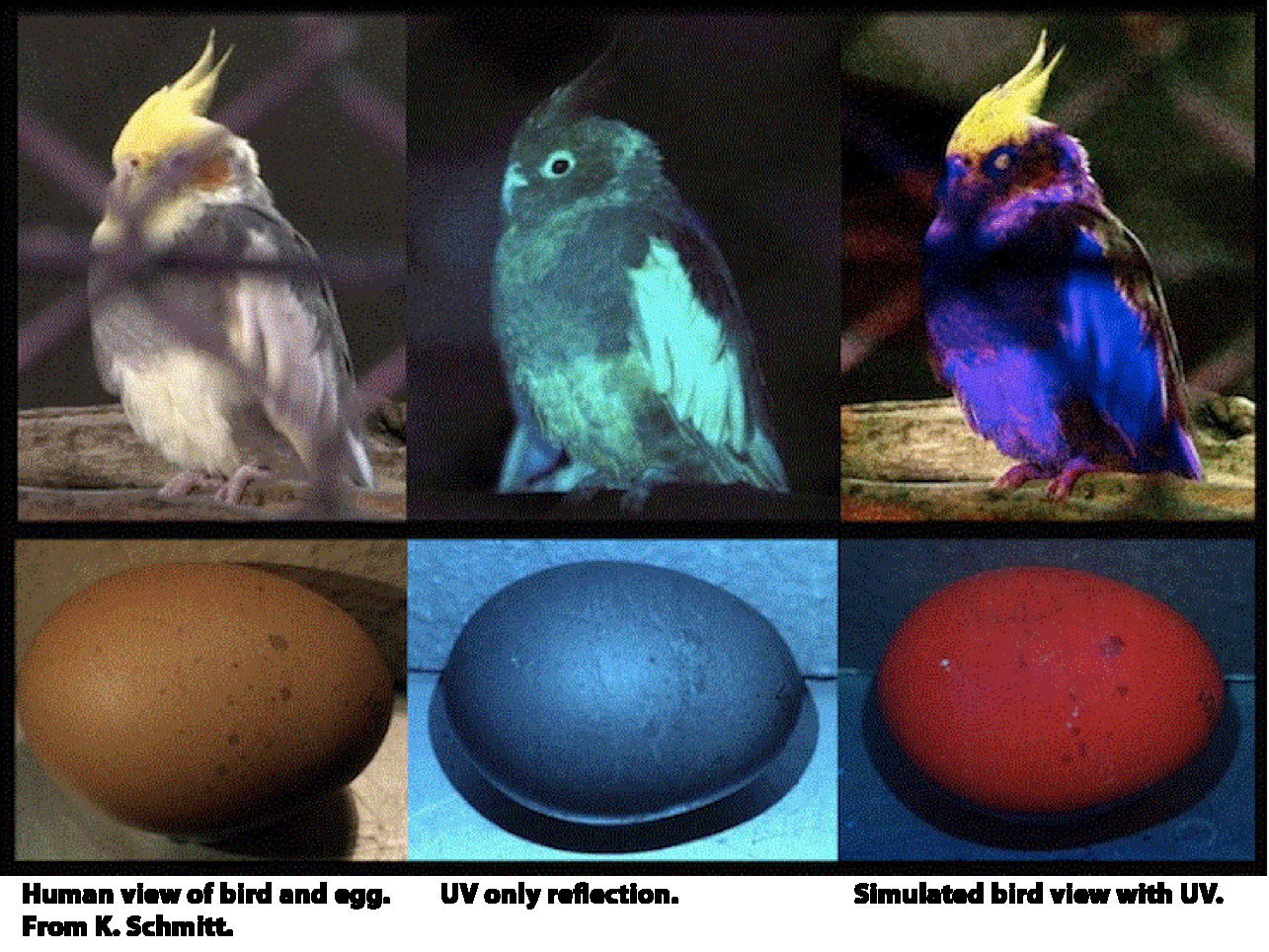
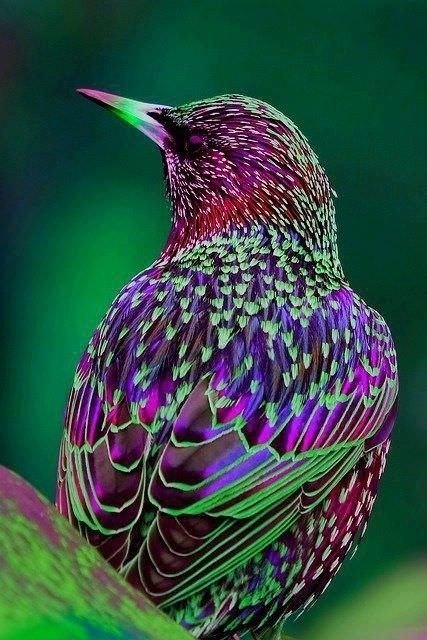
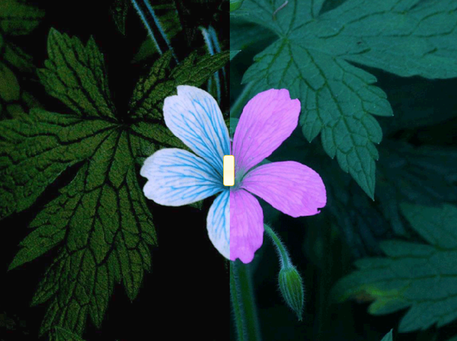
Birds (left) Humans (right)
2 What Dogs See:

Humans (left) Dogs (right)

Dogs only have two cones, blue and yellow but not red and green. Their vision can be compared to a human who is color blind.
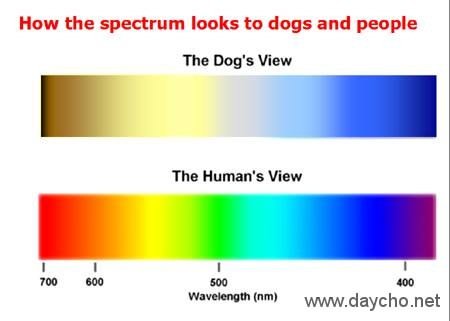
Dogs are virtually color-blind so they rely on their heightened sense of smell for most of their navigation.

Humans (left) Dogs (right)
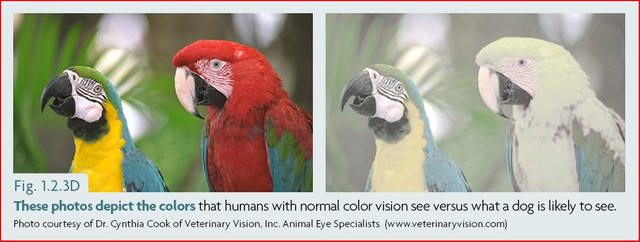
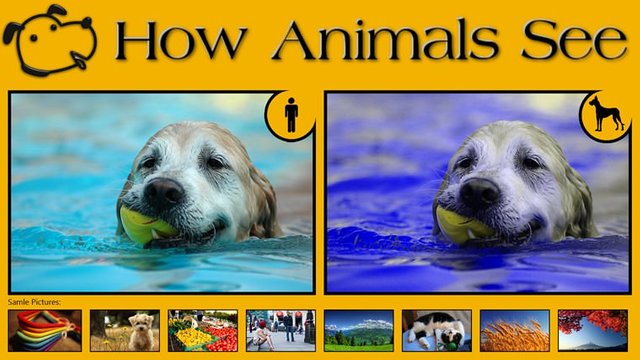
Although their peripheral vision is much wider than ours.
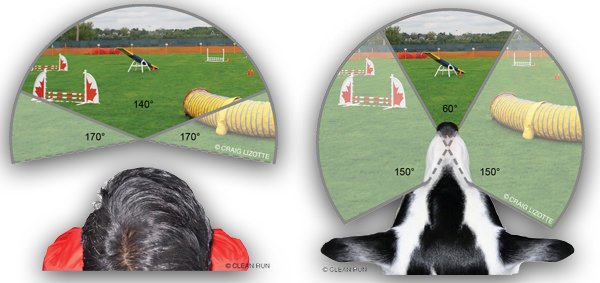
Can you see the question mark in this image? If not, you may be color blind. A dog would not be able to see the question mark, it would detect no difference between the red and green.
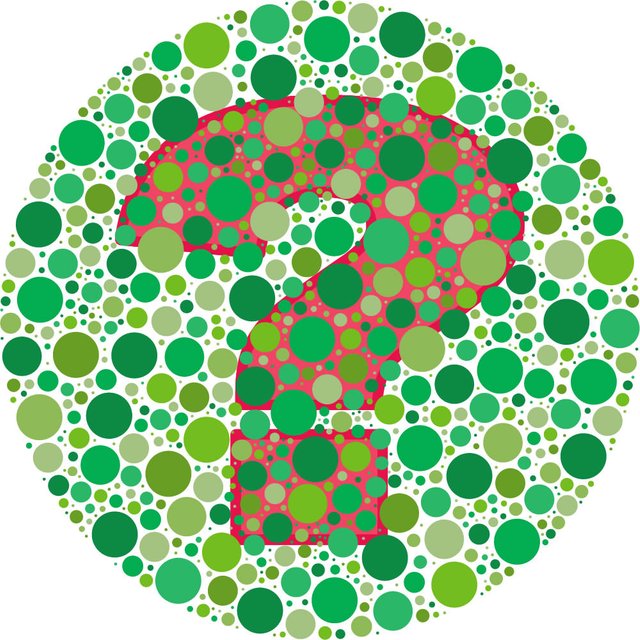
3 What Mantis Shrimp See:

In a study published in the journal Current Biology, researchers report that that mantis shrimp use a set of filters to separate ultraviolet light into discrete colors that get picked up by the animals photoreceptors.
This is the most extreme example of animals using filters to expand the range of colors they can see, and the first in the UV spectrum the scientists say. The have the most complex visual system known to any animal.

They have up to 16 photoreceptors that can detect UV, visible, and polarised light. In fact, they are one of the only animals known to detect circularly polarised light, which is when the wave component of light rotates in a circular motion. They also can perceive depth with one eye and move each eye independently.
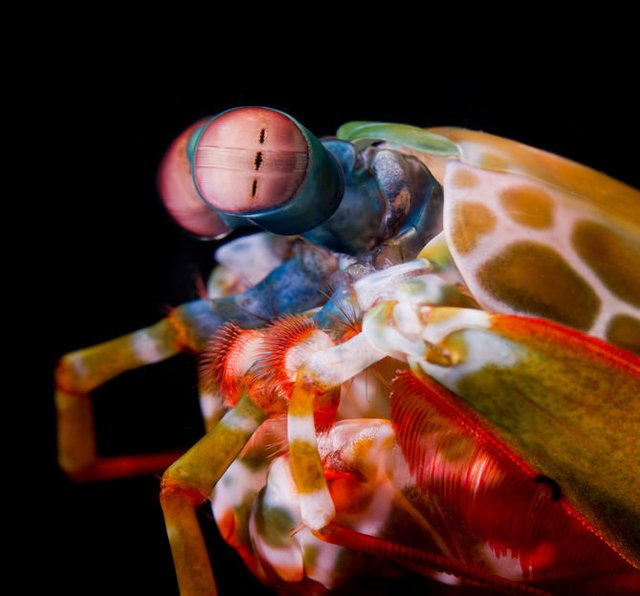
Mantis shrimp have compound eyes that are made up of tens of thousands of ommatidia (elements containing a cluster of photoreceptor cells, support cells and pigment cells) much like flies. In the species with spectacular vision, Gonodactylids and Lysiosquillids, the middle of the eye has six rows of modified ommatidia called the mid-band.
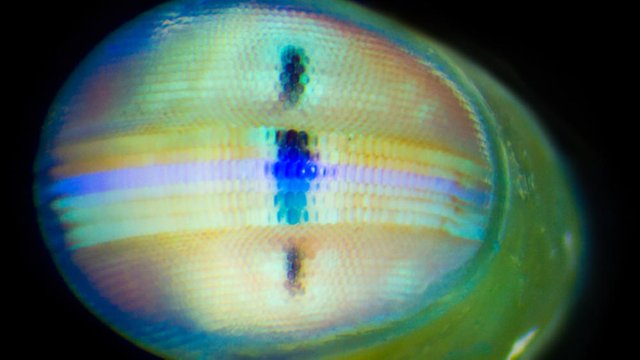
4 What Snakes See:
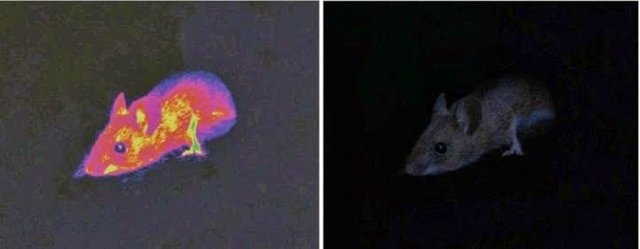
Snakes (left) Humans (right)
Pit vipers, like rattlesnakes, and the group of snakes including pythons or boas can literally see the world in two different ways. They can see some color, but also infrared, with extremely sensitive infrared sensors located on their heads.
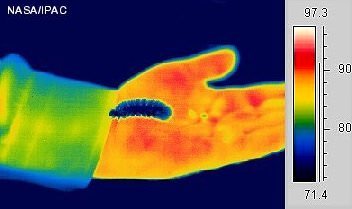
A rattlesnake has one small pit on each side of its head, filled with thousands of receptor cells which are actually microscopic-sized infrared sensors. Yet despite their tiny size, the sensors are at least 10 times more sensitive than the best artificial infrared sensors that have ever been built.
5 What Cutlefish See:
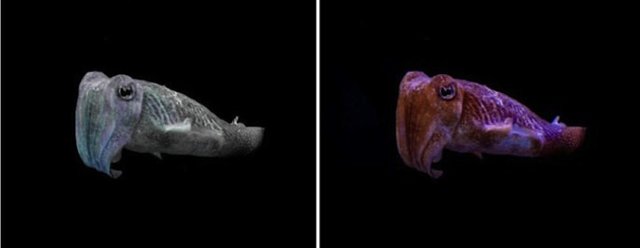
Cuttlefish (left) Human (right)
A cephalopod such as a squid, octopus, or nautilus all evolved separately from vertebrates, so their vision process is very different from ours. For example, cephalopod eyes have no blind spot, and the pupil of a cuttlefish is shaped like a W making it look especially alien as it pursues prey in the ocean.
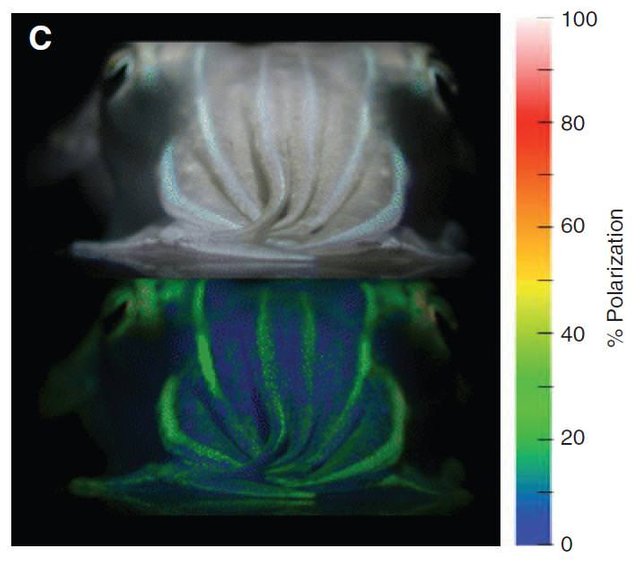
Cuttlefish have blurrier vision than us, and cuttlefish are totally colorblind. Cuttlefish eyes have one photoreceptor that lets them see in shades of gray and another pair of photoreceptors detects polarization. Humans’ only experience of polarized light comes when we wear sunglasses that reduce sun glare by filtering out one orientation of light waves. But unlike cephalopods, we don’t have photoreceptors to detect whether light is polarized or not.
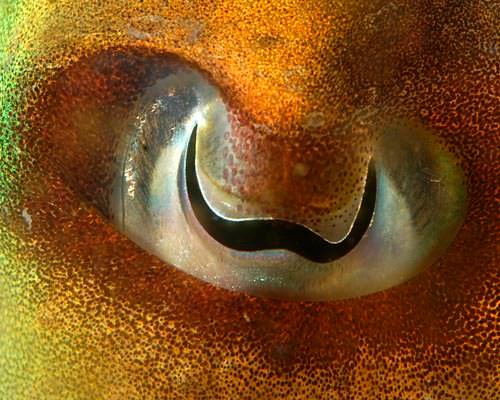
Cuttlefish produce polarization patterns on their skin that they may use to communicate. Cuttlefish see each other in shades of gray with the polarization information overlaid, not unlike the rattlesnake’s infrared sense.
6 What Bees See:

Bees (left) Humans (right)
Bees have color receptors for blue and green but also the UV spectrum.
Even though bees don't see red, they can see other reddish wavelengths such as orange and yellow. The colors bees see are blue-green, blue, violet, and ultraviolet, with research showing our purple followed by our violet then our blue as their favorites.
Bees not only see flowers differently than we do, bees also see ultra-violet light patterns at the center of the flower that are a different colors than the rest of the flower. The UV colors and patterns in a flower's petals dramatically announce the flower's amount of nectar and pollen. These UV patterns act like a landing zone, guiding the bees to the nectar source.
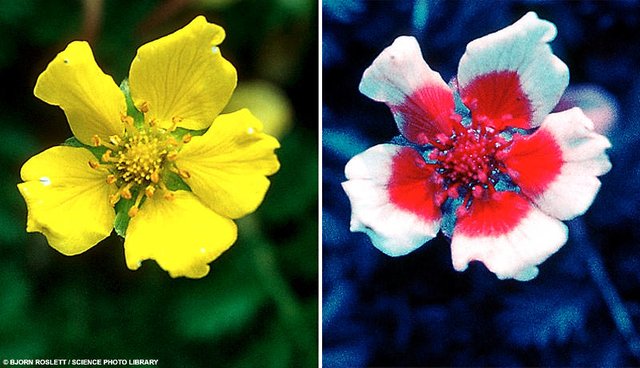
Humans (left) Bees (right)
7 What Cats See:
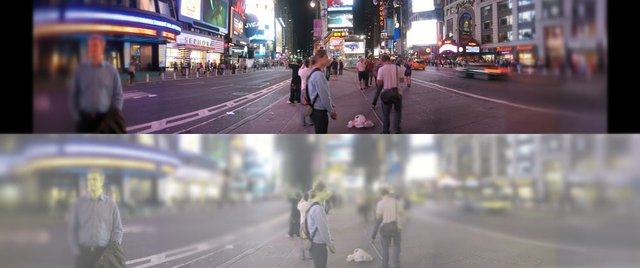
Humans (above) Cats (below)THE BLURRINESS AT the edge of the photos represents the area of peripheral vision in humans (20 degrees, top) and cats (30 degrees, bottom).

Humans (above) Cats (below)
Cats like dogs and many other animals have a tapetum lucidum, which is a reflective layer behind the retina that sends light that passes through the retina back into the eye.
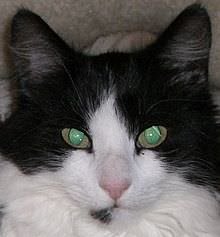
While this improves the ability to see in darkness, it appears to reduce net visual acuity. The tapetum and other mechanisms give the cat a minimum light detection threshold up to seven times lower than that of humans. This helps it to distinguish movement in the dark.

Because of their reduction in net visual activity cats cannot clearly focus on objects that are more than 20 feet away.
8 What Scarab Beetles See:
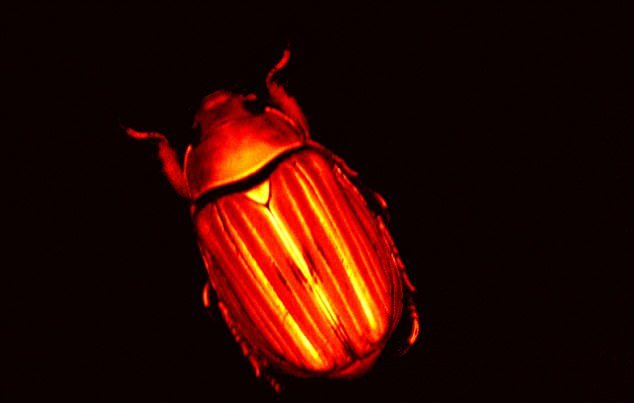
Chysina beetles or 'jewelled scarabs' reflect light that humans can't see - circular polarised light. It's not known what this is used for, but scientists suspect it is used for communications.
Polarized light can be harmful to humans and we must wear sunglasses to protect out eyes but some animals use it to survive. The mantis shrimp, scarab beetle, and bats are among some of the animals that use this form of vision.
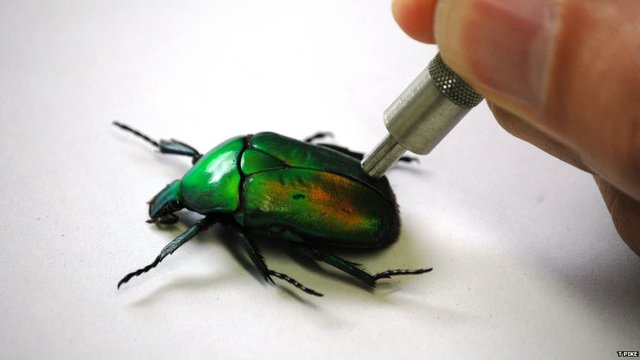
9 What Bats See:
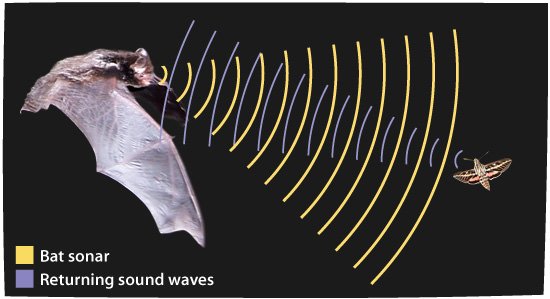
Bats use echolocation to locate and catch their prey. When bats fly, they produce a constant stream of high-pitched sounds only bats are able to hear. When the sound waves produced by these sounds hit an insect or other animal, the echoes bounce back to the bat, and guide them to the source. But, studies confirm that bats also see with polarized light.
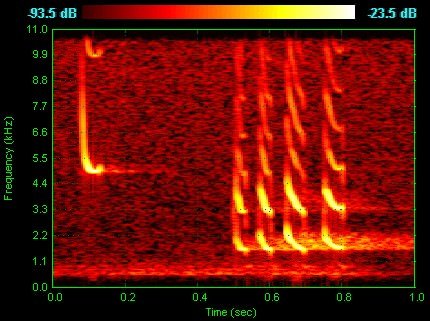
The greater mouse-eared bat (Myotis myotis) is the first mammal known to navigate using polarized light — light waves that are parallel to each other and vibrate in a single plane. The bats use the scattered polarized rays at sunset to calibrate their internal compass and fly in the right direction, detailed in the journal Nature Communications.
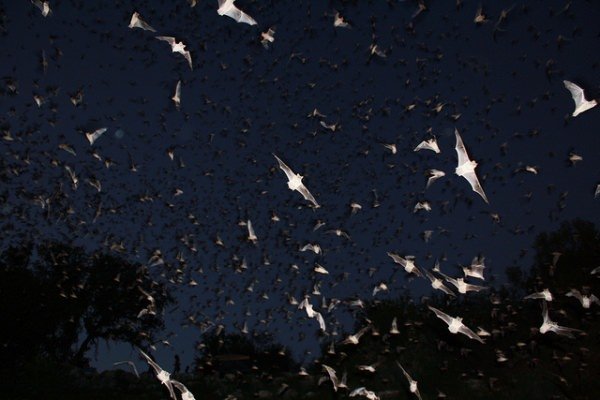
In the study, Greif and his team showed 70 adult female bats two types of polarization patterns at sunset. Then they released them at two different sites in Bulgaria at 1 a.m. — when no polarization was visible — about 12 to 16 miles (20 to 25 kilometers) from their roosts. The researchers attached tiny radio transmitters to the animals' backs in order to track their movement.
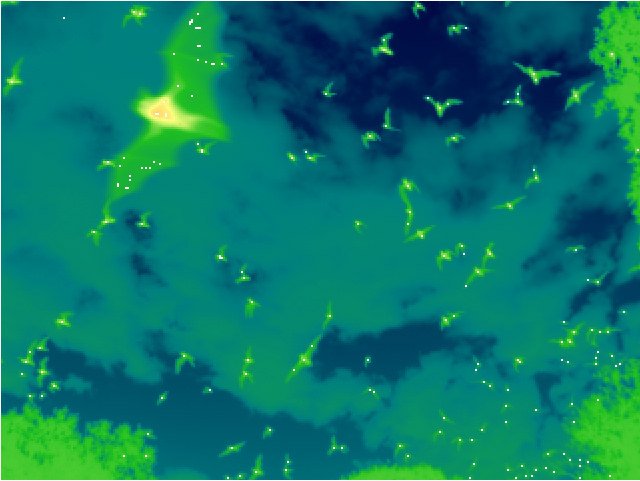
The bats that were shown shifted polarized light flew at a right angle to the direction of bats shown unshifted polarized light, suggesting they were using the polarization to guide their flight. The animals likely use a combination of echolocation, sight, the position of the sun or stars, and the Earth's magnetic field to find their way, the researchers said.
10 What Butterflies See:
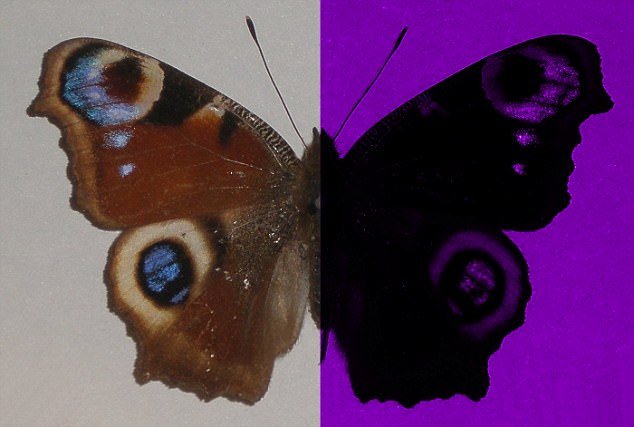
Butterflies see with red, green, blue, UV, and the wideband light from red to purple.


Like Bees, this enables them to detect a flower's stash of pollen. Butterflies have only 0.04 the visual acuity of humans but still with barely the vision to see a small coin at a distance of 50 cm, it can accurately extend its straw-like mouth to flower nectar guides less than 1 mm in diameter.
The structure of a butterfly’s eye is very different from that of a human eye. The butterfly has a compound eye comprised of many facets—in the case of the swallowtail, each of its eyes consists of an incredible 12,000 facets. The different facets do not of course see a different view of the world—rather, like the pixels of a digital camera, the facets collectively perceive a single view of the world.
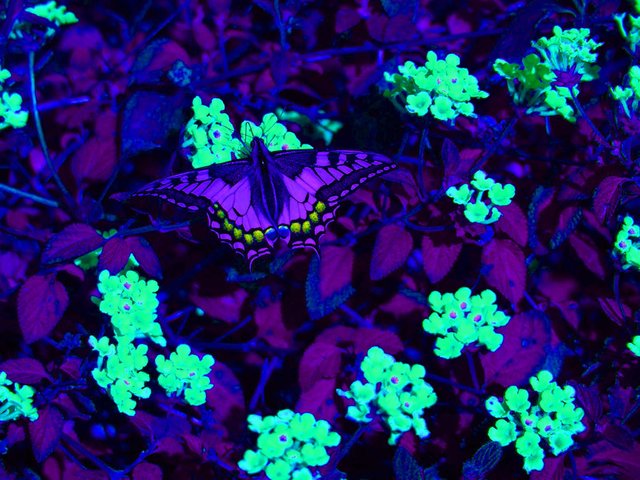
Good post friend... i follow you and take you update